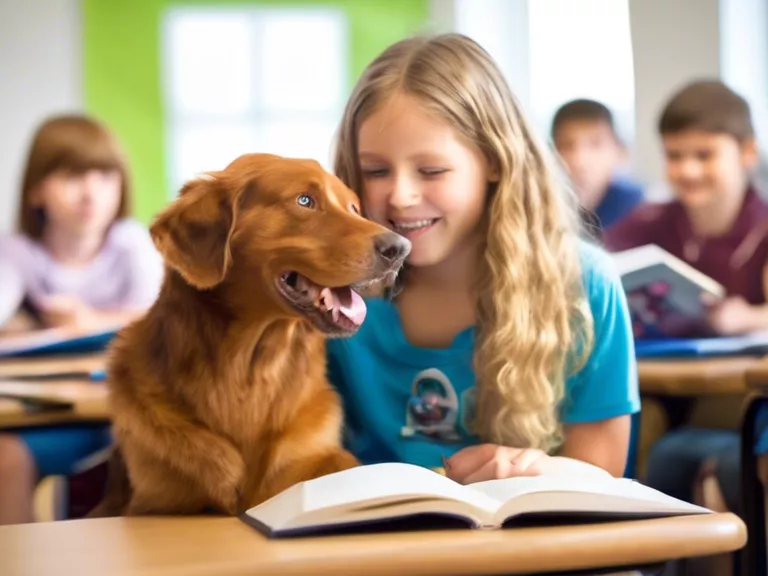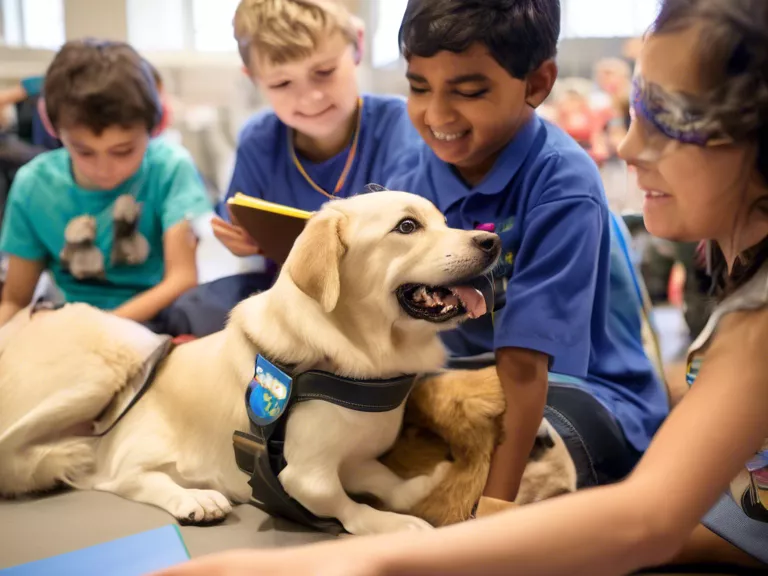
Introduction
In recent years, the trend of having pets in the classroom has gained popularity as educators and researchers recognize the numerous benefits of integrating animals into the learning environment. From small rodents to gentle dogs, furry friends bring a unique dynamic to the classroom setting, offering opportunities for students to learn valuable lessons beyond traditional academics. This article explores the ways in which pets can enhance education and contribute to the overall well-being of students.
Benefits of Classroom Pets
Emotional Support and Stress Reduction
Pets in the classroom provide emotional support to students, creating a sense of comfort and security. Interacting with animals has been shown to reduce stress and anxiety levels, helping students feel more relaxed and at ease in the learning environment. The presence of a furry friend can offer a source of unconditional love and companionship, particularly for students who may be facing challenges or feeling isolated.
Promoting Responsibility and Empathy
Caring for a classroom pet fosters a sense of responsibility and encourages students to develop empathy towards living creatures. Assigning tasks such as feeding, grooming, and cleaning up after the pet teaches valuable life skills and instills a sense of accountability. Students learn to prioritize the needs of their furry friend and understand the importance of providing proper care and attention.
Enhancing Social Skills and Communication
Pets serve as a common point of interest that can facilitate social interactions among students. Sharing experiences and responsibilities related to the classroom pet encourages collaboration and teamwork. Additionally, caring for an animal can improve communication skills as students learn to observe, interpret, and respond to the needs and behaviors of their furry companion.
Educational Opportunities with Pets
Integration Across Subjects
Classroom pets offer diverse educational opportunities that span across various subjects. For instance, students can study the biology and anatomy of the animal, learn about its habitat and dietary needs, and explore mathematical concepts such as measurement and data analysis through pet-related activities. Integrating pets into lesson plans can make learning more engaging and relevant to students' lives.
Hands-On Learning Experiences
Interacting with a classroom pet provides hands-on learning experiences that cater to different learning styles. Tactile learners benefit from the sensory experience of touching and caring for the animal, while visual learners can observe its behaviors and physical characteristics. Pets can serve as living models for scientific experiments, observation projects, and creative writing prompts, enriching the learning process.
Encouraging Curiosity and Inquiry
Having a pet in the classroom sparks curiosity and encourages students to ask questions and seek answers through inquiry-based learning. Teachers can incorporate the pet into discussions about animal behavior, environmental conservation, and responsible pet ownership, prompting critical thinking and reflection. By exploring topics related to their furry friend, students develop a deeper appreciation for the natural world and cultivate a sense of curiosity about the interconnectedness of living organisms.
Considerations for Classroom Pet Ownership
Proper Care and Maintenance
Before introducing a pet into the classroom, educators must ensure that they have the resources and knowledge to provide appropriate care and maintenance. This includes creating a suitable habitat, establishing a feeding schedule, and addressing the pet's health and well-being. Regular veterinary check-ups and hygiene practices are essential to safeguard the health of both the animal and the students.
Allergies and Safety Precautions
It is important to consider potential allergies and safety concerns when bringing a pet into the classroom. Some students may have allergies to certain animals or be fearful of interacting with them. Educators should communicate with parents and students to address any allergies or phobias and establish guidelines for handling and interacting with the pet in a safe manner.
Respect for the Animal
Teaching students to respect the boundaries and needs of the classroom pet is crucial for maintaining a harmonious environment. Educators can emphasize the importance of gentle handling, proper behavior around the animal, and the significance of treating all living creatures with kindness and compassion. Instilling a culture of respect towards animals fosters a sense of empathy and responsibility among students.
Conclusion
Integrating furry friends into the classroom environment offers a multitude of benefits that enhance education and promote holistic development among students. From emotional support and stress reduction to hands-on learning experiences and improved social skills, pets play a valuable role in creating a nurturing and engaging learning environment. By carefully considering the educational opportunities and responsibilities associated with classroom pet ownership, educators can harness the positive impact of animals in enriching the educational journey of their students.

